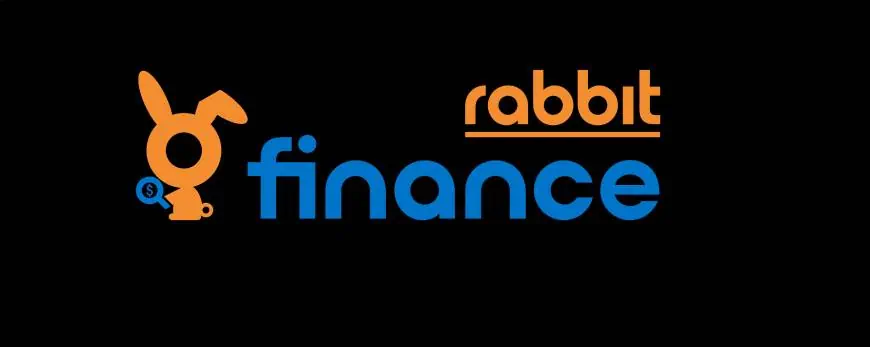Yield farming is a popular high-risk cryptocurrency investment strategy used by investors to earn different financial or non-financial rewards through providing a decentralized finance (DeFi) platform with liquidity.
Yield farming is the lifeblood of many DeFi platforms. There are different ways to yield farm and DeFi projects use yield farming to incentivize their users to contribute liquidity.
Different platforms have emerged to leverage yield farming DeFi protocols and one such platform is Rabbit Finnace. This article will delve deep into understanding this platform and its impact on yield farming.

What Is Rabbit Finance?
Rabbit Finance stands as a DeFi platform that allows users to engage in yield farming by utilizing their lending power within the ecosystem. The platform was released by the Rabbit Finance Lab and is built on the Binance Smart Chain. Rabbit Finance applies the trading protocol of lending and borrowing to facilitate the exchange of digital currencies across different blockchains.
The platform allows users to be lenders, farmers, or traders on the “Bank of Rabbit Finance”. Lenders earn rewards in RABBIT, the platform’s native token, and also via interests from borrowers paying for open leverage yield farming. On the other hand, yield farmers get their rewards, from their trading pools.
Traders can buy and sell popular cryptocurrencies like Bitcoin (BTC), Binance coins (BNB), and Ethereum (ETH), Binance coins (BNB), and this will increase other cryptos in the future.
Rabbit Finance encourages users to “overlend” to gain more rewards. For example, if a user has insufficient funds to offer liquidity, Rabbit Finance will offer them the funds to do so. Cryptocurrencies lent to the platform become available for farmers and traders. To protect the platform and its users, anyone participating must provide the “Bank” with collateral to cover the credit risks.
RABBIT Token
Rabbit Finance has its own token called RABBIT, a governance token. Governance tokens are cryptos that democratize decentralized applications and other blockchain protocols.
A governance token enables users to participate in a chain’s governance, including the acceptance and rejection of dApps. Users on the through voting, and usually voting power is linked to the number of tokens an individual holds.
The total supply of the token is 200 million, with the Community Pool getting 159,500,000, the Institutional Pool gaining 10,500,000, the Development Fund
20,000,000 and the Warchest Fund 10,000,000.
The RABBIT is already available for sale in different exchanges, the most popular being PancakeSwap (v2). The most active trading pair of the token is RABBIT/WBNB with a trading volume of $1,603.08.
RABBIT Uses
The platform’s token RABBIT has been designed for the following uses.
Protocol Governance. Similar to other governance tokens, RABBIT is meant to allow users to decide on key blockchain decisions.
- A Reward token. Lenders and borrowers on the platform will be rewarded using the RABBIT token depending on their impact on borrowing and lending patterns.
- As a reward for dealing with the stablecoins inflation. For example, if or when RUSD is inflationary, users who offer RABBIT to the platform will be rewarded with RUSD.
- As a yield-bearing token for Rabbit Finance. Yield-bearing tokens are those that increase in value when held long-term, usually through staking. With RABBIT, users can also put the tokens in liquidity pools for better returns.
RABBITDAO
Rabbit Finance also features a decentralized autonomous organization that provides users with voting rights to enable the platform’s development and investment in more Web3 infrastructure.
RABBITDAO’s primary governance token is the RABBIT Share Coin (RS) and users can mint the coin or stake it to earn rewards.
Features of Rabbit Finance
Rabbit Finance has certain key features that enhance its usability.
- Automatic staking. The platform allows users to stake tokens and this can be done automatically on the user’s platform of choice.
- Rewarding system. Users can claim RABBIT rewards when they open a yield farming position. The rewards gained can be redeemed at the stake page.
- Continuous compounding. Users are helped to reinvest the rewards accrued in every pool by bounty hunters.
- Conversion of assets. Rabbit Finance converts user-deposited assets and the borrowed BNB or BUSD so that users do not have to do it themselves.
How to buy Rabbit Finance
The primary crypto exchanges facilitating Rabbit Finance trades are PancakeSwap v2 and MDEX, both operating on the Binance Smart Chain. Additionally, purchasing through Binance using BNB as the base currency offers another avenue to acquire Rabbit Finance tokens.
- Download a crypto wallet that’s integrated like Trust Wallet.
- Register and set up the wallet. If you are unsure of how to go about it, use the wallet’s support page for reference.
- Register and set up the crypto wallet via the wallet’s Google Chrome extension or via
- Buy BNB as your base currency from your Binance account.
- Send the BNB from your Binance account to your wallet following the instructions given.
- Buy BNB as Your Base Currency
- Choose a Decentralized Exchange (DEX) that is supported by your wallet and go to PancakeSwap to make the transaction.
- Connect your wallet to the DEX
- Select your BNB as the payment and select Rabbit Finance as the coin you want to acquire.
- Click on the Swap button to finalize your transaction.
Conclusion
Decentralized finance (DeFi) is a revolutionary financial technology that aims at challenging and eliminating the fees banks and other financial services charge. Rabbit Finance is leveraging yield farming enabling users, even those with insufficient funds to access funds. This makes Rabbit a one-of-a-kind option for crypto investors.
Disclaimer: Investing can be quite a wild ride – especially when you don’t know the terrain! To keep things from getting too rocky, take some time beforehand to get familiar with all of the risks involved. Our site is here to up your investor game by providing all available intel about platforms and trends, but we don’t take responsibility nor can we be held accountable as advisors. That being said, it’s still important for you to make educated decisions that match what works best for YOU – just remember: no amount of savvy will guarantee success or protect against loss so invest money you can spare.











